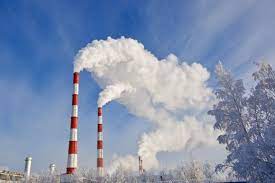A study says that emissions from proposed and approved gas projects endanger the Paris Agreement goals as western countries seek to stave off the energy crisis.
Hasty policy changes by major global economies to procure gas amid the global energy crisis pose a threat to the Paris Agreement, according to new data published by Climate Action Tracker (CAT) on Thursday.
The Paris Agreement is considered to be the most important international climate treaty signed by 175 countries in April 2016 to limit global warming to below 2 to 1.5 degrees Celsius, compared to pre-industrial levels.
The analysis by CAT, which keeps tabs on governments’ progress on their climate goals, says new gas projects will result in oversupply, an “overreach” in the eyes of CAT experts that must be “scaled back”.
The CAT, a collaboration between non-profit research institutes Climate Analytics and the New Climate Institute, has calculated the CO2 emissions of all Liquefied Natural Gas (LNG) projects currently under construction, or that were proposed and approved between 2021 and 2050. It found the gas they will produce far exceeds what’s needed to replace Russian gas.
According to the report, oversupply of LNG could reach 500 megatonnes by 2030, equivalent to almost five times the EU’s imports of Russian gas in 2021, and double the amount of total Russian gas exports. This could lead to excess emissions of around two gigatonnes of CO2 a year in 2030.
This equals roughly 10 percent of the remaining global carbon budget, or the emissions limit countries should adhere to in order to achieve global climate goals.
The findings were presented at COP27, the UN climate conference taking place in the Red Sea resort town of Sharm El Sheikh, Egypt, from November 6 to November 18.
“The energy crisis has taken over the climate crisis,” said Bill Hare, CEO of Climate Analytics.
“We’re witnessing a major push for expanded fossil gas LNG production and import capacity across the world,” he added. “Increasing our reliance on fossil gas cannot be the solution to today’s climate and energy crises anywhere.”
New gas and fossil fuel projects are in the works across the world. Argentina, for instance, is fast-tracking a new gas pipeline and has granted new offshore oil exploration licenses. Germany supports fossil fuels projects abroad with public funding, and while it has made investments in renewable energy, it is also keen to support an offshore gas project in Senegal. The US – the world’s largest supplier of fossil fuels – is planning to increase its LNG export capacity by one-third by 2026.
A year of little action
Also on Thursday, Global Action Tracker released its annual warming projections, based on an analysis of climate action by 41 countries that emit around 80 percent of global greenhouse gases. The research group’s projections have not changed since the same figures were released at COP26 in Glasgow last year.
The 2030 national emissions reduction target set the world on course for 2.4˚C warming by the end of the century.
“With governments focusing on the energy crisis, this has been a year of little action on the climate: almost no updated national climate targets for 2030 and no significant increase in participation in Glasgow initiatives on coal phase-out, clean cars and methane,” said Prof. Niklas Hohne of the New Climate Institute.
“To limit warming to 1.5˚C, countries need to flip to emergency mode on climate as they do on the energy crisis,” Hohne added.

 Iran Energy News Oil, Gas, Petrochemical and Energy Field Specialized Channel
Iran Energy News Oil, Gas, Petrochemical and Energy Field Specialized Channel



